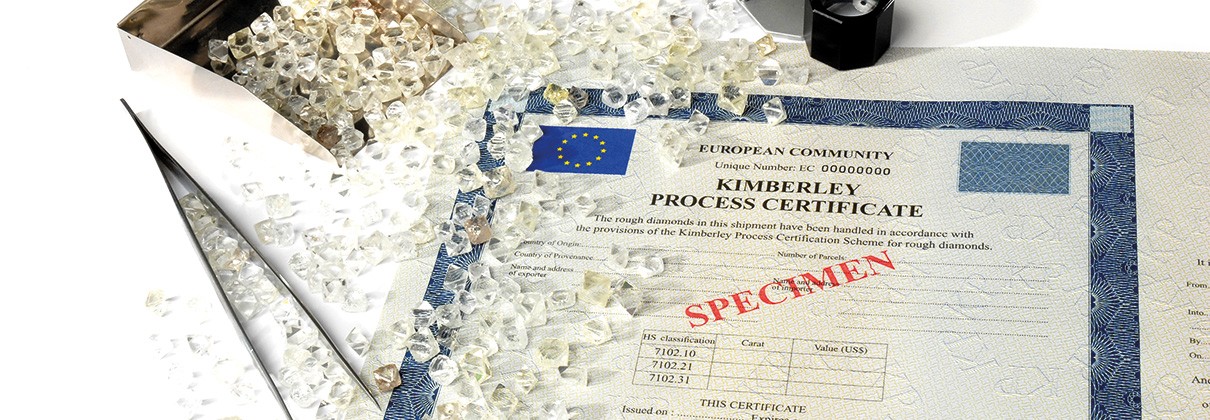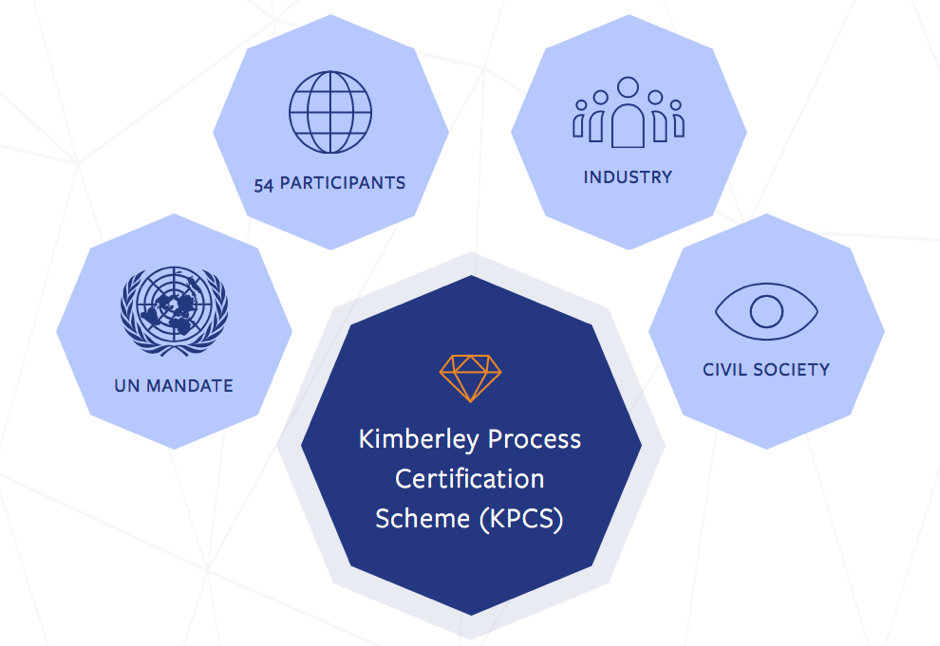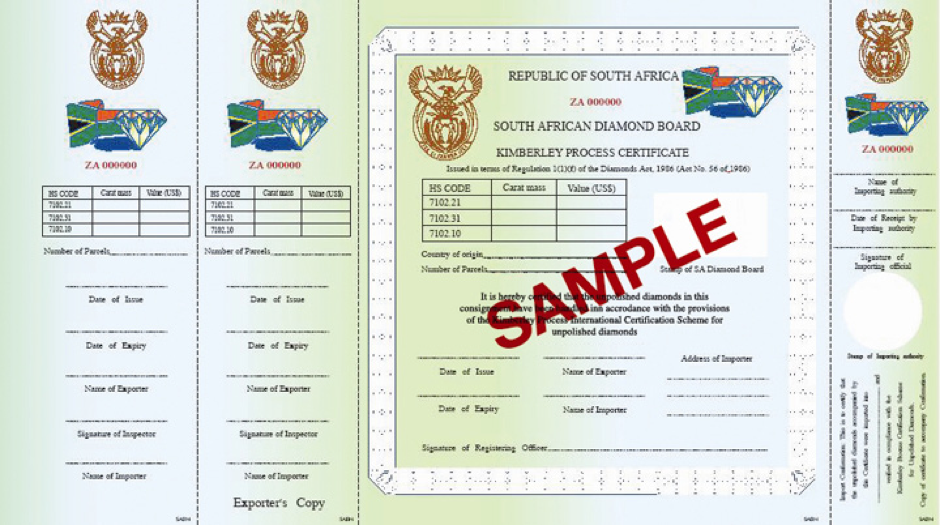Kimberley Process

Why it was created
You have probably heard of ‘conflict diamonds’ or, as the media says, ‘blood diamonds’. Back in the 1990s and earlier, there were a couple of really nasty civil wars going on in Africa, particularly in Sierra Leone and Ivory Coast, but also in the Democratic Republic of Congo, Angola and Liberia. Another thing these countries have in common is natural resources, one of which is diamonds.
In order to fund their wars against the government, rebel groups would take over the mines and sell the diamonds or trade them for weapons. The United Nations wanted to end this practice, so in 2000 they met with Southern African diamond-producing states in Kimberley, South Africa. Here it was decided to create an international certification scheme for rough (i.e. not yet polished & shiny) diamonds, and in 2003 the Kimberley Process was born
What is it?
The Kimberley Process Certification Scheme (aka Kimberley Process, aka KP) is an international certification scheme that regulates the trade of rough diamonds. Its aim is to prevent and ultimately eliminate the flow of conflict diamonds (conflict diamonds = rough diamonds used to finance wars against governments). It has succeeded in making over 99% of rough diamonds conflict-free.
The KP unites the governments of all major diamond producing, exporting and importing countries, civil society (NGOs that serve as observers) and the diamond industry (working groups to ensure it functions properly) into a binding agreement to regulate the rough diamond trade.
Currently it includes 54 participants representing 81 countries, with the European Community counting as a single participant. The KP has a chair that oversees the KP and the operations of all its associated groups and committees. This changes annually. Australia was the 2017 Chair, and the European Community is the Chair in 2018.

How it works
After rough diamonds are mined, they are taken to Government Diamond Offices. Here the source is checked to ensure it is conflict-free. The diamonds are then sealed in containers and issued a KP Certificate. They may now be sold or exported, but only to another participating country. Once imported, the customs office checks the certificate and seal of the container. No certificate or broken seal? No entry.
Only after a diamond has been legitimately imported is it allowed to be traded, cut & polished, and set into jewelry. This often involves several companies, and each time a diamond changes hands, the invoice must include a warranty stating that the stone is not from a conflict source. This is called the “System of Warranties”. Finally, retailers that sell the diamond to consumers are responsible for ensuring their diamonds have a warranty that they are conflict free.

Impact
The Kimberley Process has succeeded in eliminating over 99% of conflict diamonds from the rough diamond trade. This is important for several reasons:
- It helps eradicate a source of funding to buy the weapons that fuel bloody conflicts: if your diamonds are not legitimate, no one will buy them.
- Because it monitors the source of diamonds, miners are far less likely to earn their livelihood - often the only way to earn their livelihood - in threatening situations.
- Because illegitimate trade is not rewarded, countries receive the revenues from their resources, which is important for economic, social, educational and healthcare development.
- Today’s consumers want to know that the products they purchase are not contributing to violence and injustice. They want to buy a diamond with confidence. The KP unifies everyone involved in the rough diamond trade behind this very goal.

